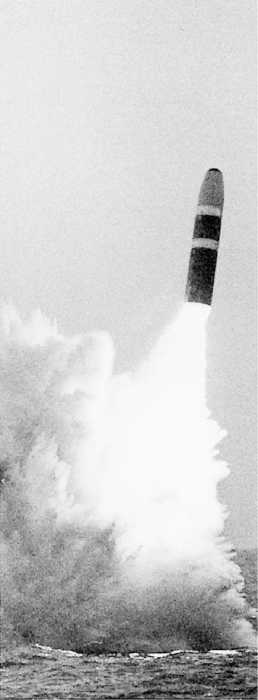presumed lost' were used to inform the world of a possible SSN loss during normal patrol operations.


While the exact method of location is still not openly known, it appears that the U.S. seabed-based sound listening (SOSUS) network heard an explosion from
On a more positive note, the Navy built several new prototype submarines to explore new propulsion technologies. The USS

The New Generation of Boats
In the late 1960s, the U.S. intelligence community began to receive disturbing indications that the nuclear submarines of the Soviet Union had much higher performance capabilities than previously thought. A debate broke out between Admiral Rickover at the Naval Reactors Branch and the Naval Sea Systems Command (Navsea) over the direction of the next generation of attack submarines. Rickover felt that what was needed was a quiet, high- speed (over 35 knots) attack submarine able to support the carrier battle groups deployed by the U.S. Navy. Navsea was supportive of a design called Conform, utilizing a natural circulation reactor, which would recover the speed loss of the Permits and Sturgeons (down from 30 knots to 25 knots) and improve the radiated noise levels.[5] Eventually Rickover won out, and a twelveship class, its lead boat to be named USS


The Los Angeles-class boats delivered their promise of high speed as well as being the quietest attack submarines ever created up to that time. The price they paid for that speed was that their hulls were thinned; they could dive only to about three-fourths the depth of the Sturgeon and Permit classes (approximately 950 feet/300 meters).[6] In addition habitability suffered, with a greater percentage of the crew having to rotate bunks (called 'hot bunking'). Finally, the Navy and Electric Boat had significant financial and program management problems, along with a desire to expand the class more quickly, leading to a second-source contract for construction to Newport News-Tenneco. In spite of this, the first Los Angeles-class boats came on line in the late 1970s and immediately set new standards for quiet operations and speed. Some sixty-two Los Angeles- class boats would eventually be contracted, making it easily the largest class of nuclear submarines ever built.
In addition a whole new series of submarine weapons came on line in the late 1970s and 1980s, including the new Mod 4 and ADCAP versions of the Mark (Mk) 48 torpedo; the UGM-84 Harpoon antiship missile; and three separate versions of the R/B/UGM-109 Tomahawk missile for nuclear land attack, antiship use, and conventional land attack. All of these new weapons, combined with the addition of a vertical launch system and stowage for twelve Tomahawk missiles on the Los Angeles-class boats, suddenly made U.S. SSNs capable of a whole range of missions that Admiral Rickover had not dreamed of when he first pushed through the proposal for
The new class of boomer was somewhat clearer to design: the primary criterion was stealth. When the first boat of the new class, the USS
The Next Generation
With the coming of a new series of arms limitation treaties (the START series), the United States does not have any plans to build a new class of SSBNs. In fact, the Ohios were built with enough growth potential in their design that service lives of thirty-five to forty years are entirely possible, and if replacements are required, they won't be needed until around the year 2015.
Attack boats are another thing entirely. A follow-on to the Los Angeles class has been planned for some time, and the lead boat of the new class, USS
As production of the Los Angeles and Ohio classes winds down, and with the Seawolf program being terminated early, the future of the U.S. nuclear submarine force is in doubt for the first time in forty-five years. What has been the premier weapons system of the Cold War now seems to be a system in search of a mission and an audience. We will explore the future later on, but first let's look at the present, and what the taxpayers have bought for themselves and their silent warriors.
Building the Boats

